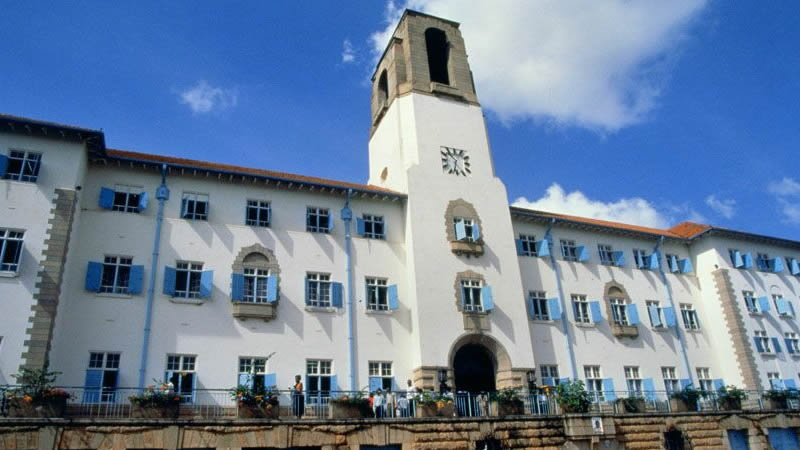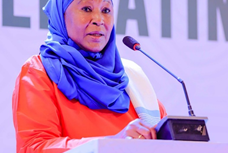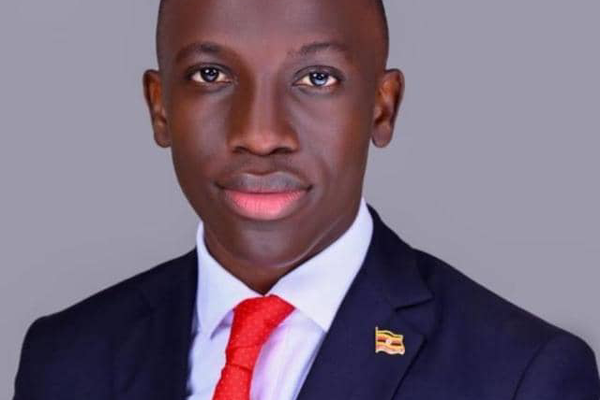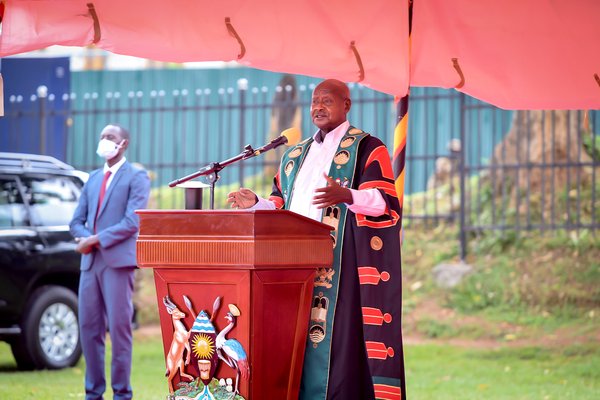By Sara Namusoga-Kaale
A winding ramp runs along the side of the entire Frank Kalimuzo and Yusuf Lule Central Teaching Facilities. Round and round you go, until you reach the last floor of the buildings. The ramps were a rare sight in the late 1990s and early 2000s, when I was a student at Makerere University. I always wondered how students who made use of wheelchairs to move around managed to navigate staircases.
Later on, when I started teaching at the Bachelor of Mass Communication course at Makerere, I encountered a most rare situation. One of the students who was admitted was visually impaired. A colleague and I who taught the Introduction to Computer class were clueless when it came to teaching computer literacy to a student like him. Somehow, we managed to accord him the necessary support and were thrilled when he performed quite well in our course. He was a brilliant student.
Creating a policy for PWDs
Since then, the management has embarked on a deliberate course to make the environment at the university more conducive for the mobility of students with disabilities. According to the Dean of Students, Mrs. Winifred Namuwonge Kabumbuli, the university has a policy for Persons with Disabilities (PWDs) as well as a disability scheme.
Miriam Najjingo, the former Guild Minister for Students with Disabilities explains that the disability scheme is a government sponsorship programme, just like the district quota scheme. Kabumbuli adds that these students are admitted on government sponsorship with slightly lower points to ensure that more of them can access university education.
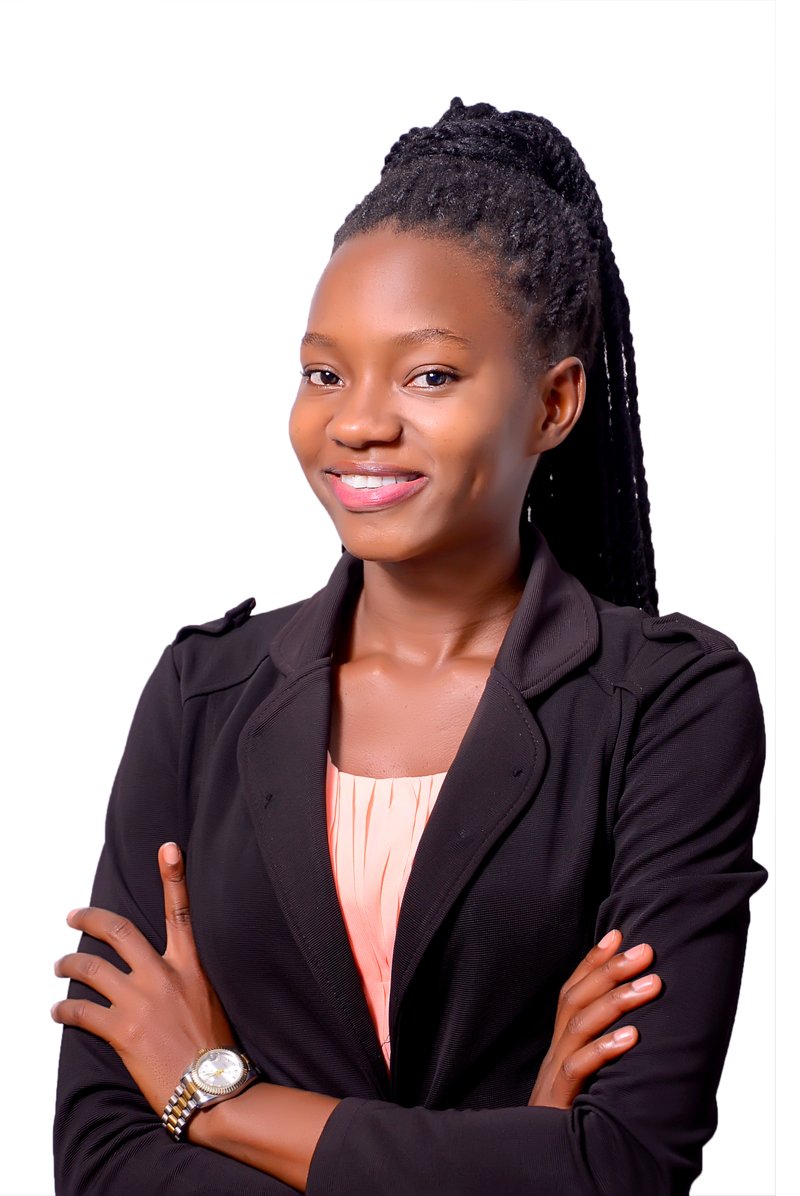
Miriam Najjingo, the former Guild Minister for Students with Disabilities
Once admitted, the students are provided with accommodation in the halls of residence with designated spaces that allow for ease of movement. Najjingo observes that “most of the PWDs occupy the ground floor rooms in their respective halls. This reduces the accessibility challenges.”
Financial support
But that is not all. According to Kabumbuli, students on the disability scheme also receive financial assistance to help them acquire equipment and other materials for academic use. In addition to this, their guides and interpreters (for those who need them) are also paid a salary.
“I know some visually impaired students who have topped up their disability allowance and bought braille machines,” explains Najjingo.
The first year visually impaired students receive UgShs1,400,000 while the partially blind receive UgShs350,000. The visually impaired continuing students receive UgShs350,000 while the partially blind receive UgShs200,000. On their part, the students with hearing impairment receive UgShs1,200,000 for the deaf, and UgShs500,000 for the partially deaf. These allowances are given annually and those on the scheme also receive a food allowance of UgShs535,000 every semester.
The other benefits include space in the Main Library that is exclusive to the PWDs. “The Main Library has three rooms on the ground floor that are used by only PWDs. These are: an equipped computer lab for users with visual impairment, a computer lab with computers for PWDs, and a study room for only PWDs,” says Najjingo.
Extra curricular activities is another area where the university supports PWDs. “We involve them in sports at national and university level,” explains Kabumbuli.
Ongoing changes
Meanwhile, the university is working hard to increase access to all the buildings. Najjingo observes that in addition to the recently constructed buildings that have ramps to improve accessibility for wheelchair users, some old buildings have been modified to provide PWDs access. “Some parts of Mary Stuart Hall, the Arts/CHUSS Building and the Department of Chemistry have recently been fitted with ramps,” she explains.
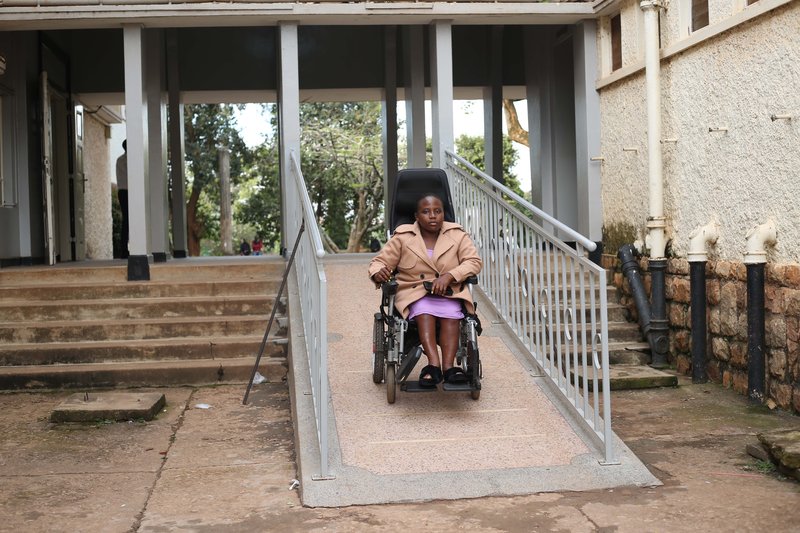
Merab Asiimwe, a third year student of Bachelor of Social Work and Social Administration using ramps at the Faculty of Arts
Efforts for inclusion go beyond ramps and allowances. Even more importantly, PWDs can participate in leadership at the hall, college and guild house levels. “The students' guild offers four slots for representatives with special needs as GRCs, and the current constitution requires each of them to have a different form of disability,” explains Najjingo. It is from these leaders that the guild president appoints a Minister for students with special needs. Once the ministry’s budget is approved, he or she then organises activities for the students.
“During my tenure as Minister, I organised training for PWDs to learn how to make liquid soap, chalk and cross bags. The training sessions climaxed with an exhibition of talent and the products that we had made during the training,” Najjingo explains. “This is one way of equipping the students with skills that can help them be more relevant in society,” she observes.
Najjingo does note that the management still needs to address a few things in order to make the campus more inclusive. According to her, “Functions within the University that call for student participation should all have interpreters to cater for students with hearing impairment, especially those on the private scheme who lack interpreters.” Moreover, the University Hospital also lacks sign language interpreters and this makes communication challenging for deaf students who visit it.
Despite these challenges, it can be said that 101 years later, Makerere is indeed still building for the future by striving to create an inclusive environment for PWDs.
Related News
![]() Please join hands with the Makerere University Endowment Fund as it works towards attracting & retaining the best faculty, providing scholarships, and investing in cutting-edge research and technology.
Please join hands with the Makerere University Endowment Fund as it works towards attracting & retaining the best faculty, providing scholarships, and investing in cutting-edge research and technology.
